Neudi & C:o is a family owned investment company in the fourth generation of the Hobohm-Hielte family. We are based in Gothenburg and have our roots within light industry and trading. The original business was founded in 1918 by Ivar Ernström who soon partnered with Albert Hobohm, who in 1920 moved from Hamburg to Gothenburg together with his family. Albert led the company until his death in 1950 at which point his son Gerhard Hobohm took over the reins and began a period of expansion. The business developed into an international minerals and building materials group with production facilities in 11 countries which eventually listed on the Stockholm stock exchange. When Gerhard retired in 1991 his son in law Eric Hielte succeeded him and initiated a radical restructuring of the group. The legacy building materials business was divested and focus shifted towards technical trading, commercial real estate and financial investments. Eric in turn handed over to his son Fabian in 2008 and under his guidance the company has continued its transition towards a financial trading house with a diversified portfolio of trading companies, real assets and financial investments. Our subsidiary Ernströmgruppen has owned and developed light industrial and trading businesses since the 1970s and today operates as a conglomerate with approximately 40 underlying operative units. Our sister company Kusinhus manages and develops residential properties under the brand “Sverigehuset”.
surbrunnsgatan
Neudi & C:o was founded the 1st of February 1918 in Gothenburg. The first office was located on Surbrunnsgatan 6 on Skeppsbron. Albert Hobohm had relocated to Gothenburg at the instigation of his previous employer in Hamburg but instead quickly became Ivar Ernström’s business partner and subsequently managing director of the company. During these early years, Neudi & C:o was a trading house for the building materials of the time – nails, board, asphalt, pipes and cement). The first chairman of the company was the well known businessman Oscar Gyllenhammar.
serponit och dolomit
The main brand of the group during the building materials period were Serponit, which had its origins in waterproof stone wool tiles that were launched in 1922. Cement was mixed with dolomite (a type of white marble). During the years the company kept innovating its product line and branched out into adjacent segments. A few parallel businesses were created such as Modulenthus (small housing production) and Ecopipe (piping for district heating systems). In 1967 the group broke ground in the dolomite mine in Glanshammar outside Örebro.
armaturjonsson
During the politically difficult years of the 1970s Armaturjonsson was acquired from its founder Bengt Jonsson. The company had a very strong position in the installation business and distributed many of the premier European brands. Armaturjonsson eventually became the core of a separate corporate project outside of the building materials group and is the origin of today’s industrial conglomerate Ernströmgruppen.
otc-listan
In 1983 the building materials group was one of the first companies to list on the newly created OTC-market in Stockholm. Confiscatory wealth -and inheritance taxes had forced many entrepreneurs abroad and the OTC-list was an attempt to enable owner led companies to remain in Sweden. After the successful listing the group expanded rapidly during many years until a dramatic downturn hit the Swedish economy in general and the building and real estate sector in particular. During the recession the owning family made an offer for the listed entity and took it private. A radical restructuring ensued and eventually led to the divestment of the minerals and building materials business. After this, the family business Neudi & C:o consisted of the subsidiary Armaturjonsson and cash from the sale.
platzer
The Swedish real estate crisis in the early 1990s caused dramatic shifts in the ownership structure of the industry. Neudi & C:o saw an opportunity in the depressed valuations by acquiring a controlling stake in Platzer Fastigheter during the mid-1990s. Platzer had recently divested its construction business in order to become a pure commercial real estate company with a focus on Gothenburg and the West of Sweden. Neudi & C:o became the main owner of the business with a 40% share. A few years later a competitor – Tornet – launched a hostile bid for Platzer which resulted in Neudi & C:o taking the company private through a counter offer. Platzer then became a wholly owned subsidiary to Neudi & C:o for some time but eventually the company came full circle and was re-introduced on the stock market in 2013 with Neudi & C:o as the main owner.
hallska huset
After having had its base in Berzeliigatan in Gothenburg for a long time, the group relocated first to Mölndal and then on to Högsbo after the sale of the legacy business. In year 2000 the property “Hallska Huset” in Östra Hamngatan 19 was acquired and this has been our headquarters since. The building has a rich history and was built in the middle of the 18th century as a mansion for the East India merchant John Hall, who also built Gunnebo Slott as his summer residence. In 1928 the mansion was rebuilt into a modern office building and the old canal on the street was paved over.
collector
In year 2006 Neudi & C:o financed an acquisition by the dynamic financial start up Collector. This led to an incredible growth journey led by entrepreneur Lena Apler. Under her command Collector developed into a full service neobank with a digital focus. Neudi & C:o was the main owner of Collector during some time but eventually invited Balder and its main owner Erik Selin to become the lead shareholder. Collector was listed on the stock exchange in 2015 and has continued to perform well. Neudi & C:o has gradually divested its shares and only retains a minor stake today.
